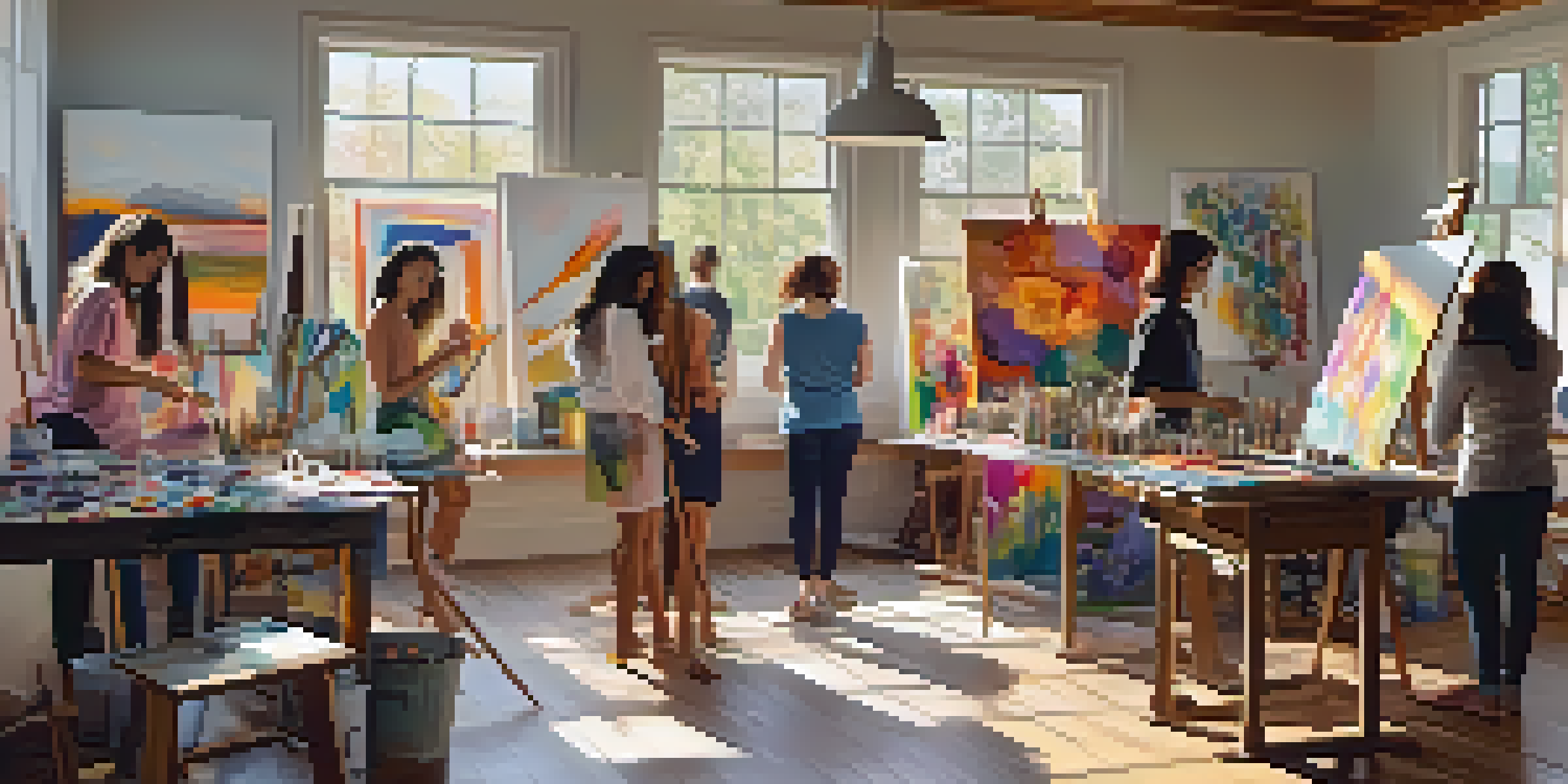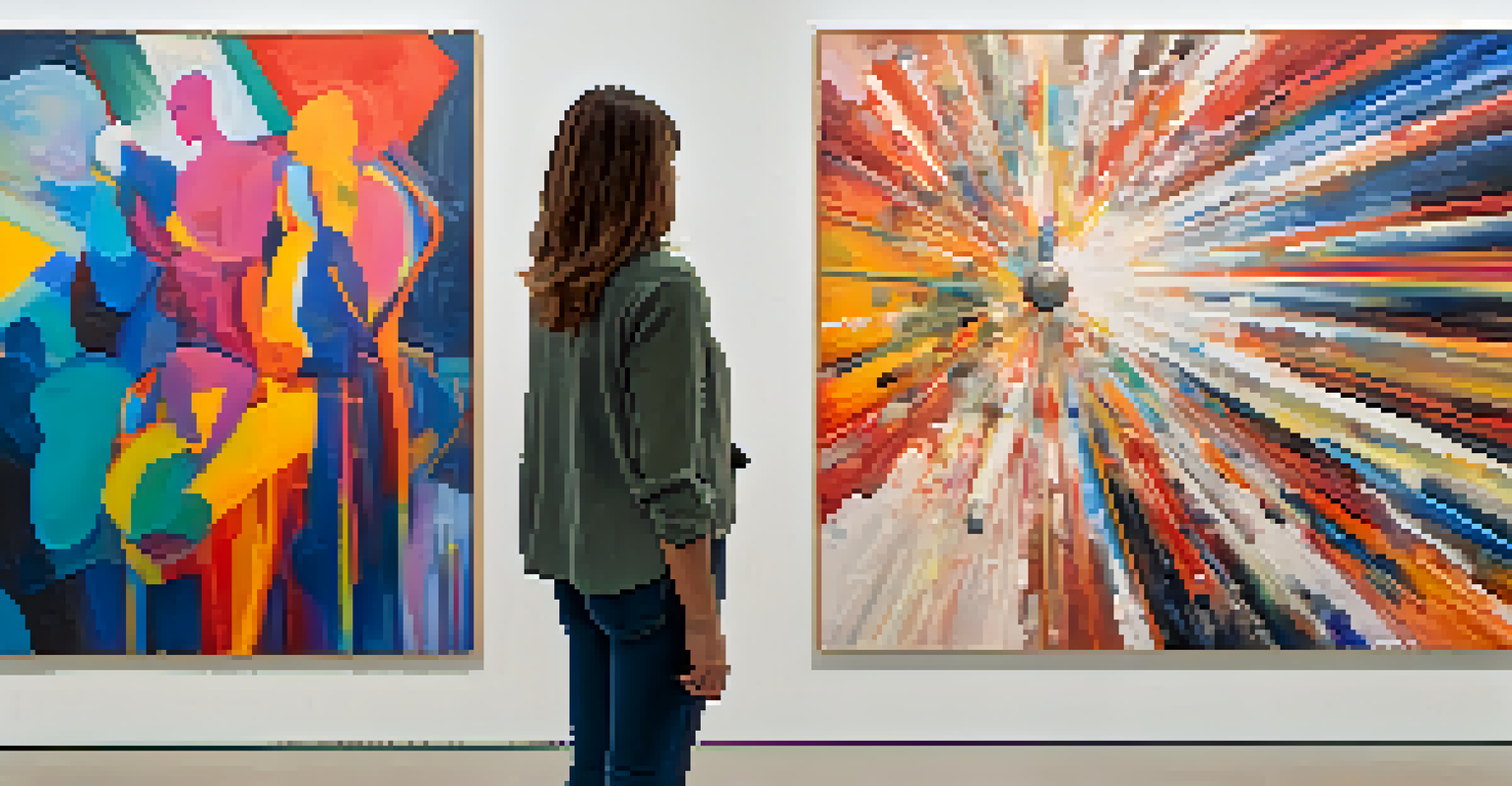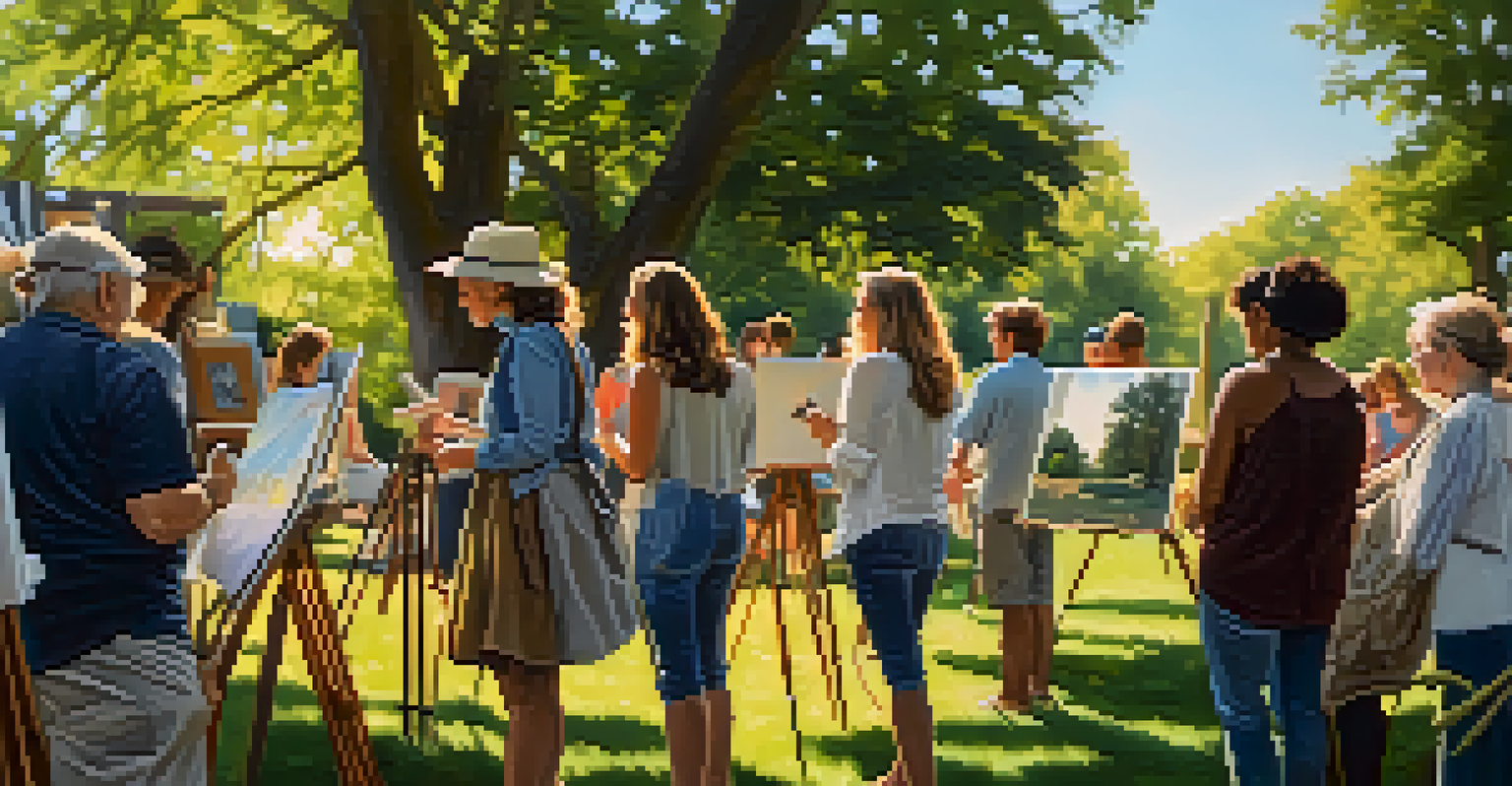Navigating Gender Bias: Women Artists and Their Challenges

Understanding Gender Bias in the Art World
Gender bias refers to the unequal treatment based on one's gender, and in the art world, it manifests in various ways. Women artists, despite their talent and creativity, often face systemic barriers that limit their opportunities and recognition. This bias can be seen in gallery representation, funding access, and even media coverage.
The art world has a long history of gender bias that has often overlooked women's contributions, but acknowledging this is the first step toward change.
For instance, studies show that male artists are more likely to be featured in major exhibitions compared to their female counterparts. This discrepancy not only affects visibility but also influences public perception, often leading to the erroneous belief that women are less capable artists. Understanding this framework is the first step in addressing and dismantling these biases.
By acknowledging the pervasive nature of gender bias, we can better appreciate the challenges women artists face and the resilience they demonstrate in overcoming these obstacles. This awareness serves as a foundation for advocating for change within the art community.
Historical Context of Women in Art
Historically, women artists have been marginalized, often overshadowed by their male peers. In many cultures, women's contributions to art were either overlooked or attributed to male influences, creating a legacy of invisibility. For example, female artists from the Renaissance period, like Sofonisba Anguissola, were recognized but often not celebrated to the same extent as their male colleagues.

This historical narrative has implications that echo into modern times, where the legacies of male-dominated art movements still prevail. As a result, contemporary women artists often find themselves fighting not only for their place in galleries but also for acknowledgment of their historical contributions. Understanding this context helps illuminate the ongoing struggle for equality in the arts.
Gender Bias Limits Women Artists
Women artists face systemic barriers in recognition and representation, affecting their visibility and opportunities in the art world.
Recognizing the importance of history is crucial for fostering a more inclusive future, where women's voices and perspectives are integral to the art narrative. It's a call to action for all of us to advocate for a balanced representation of artists across gender lines.
Barriers to Recognition and Representation
Women artists frequently encounter barriers that hinder their recognition and representation in the art world. These barriers can include a lack of access to influential networks, funding opportunities, and exhibition spaces. Without support systems in place, many talented women face an uphill battle in gaining visibility for their work.
Feminism is not just about women; it's about all of us, and it challenges the art community to embrace diverse narratives.
Moreover, societal stereotypes about gender roles can further complicate matters. Women are often pigeonholed into specific styles or mediums based on outdated notions of femininity, limiting their creative expression. This not only impacts their artistic journey but also perpetuates a narrow definition of what 'women's art' can be.
Addressing these barriers requires a collective effort to challenge the status quo and champion diverse voices within the art community. By creating inclusive platforms, we can help ensure that women artists receive the recognition they deserve and can fully express their artistic vision.
The Role of Feminism in Art
Feminism has played a pivotal role in reshaping the landscape for women artists. It has sparked movements that advocate for equality, representation, and the exploration of women's experiences through art. Feminist art movements have challenged traditional narratives, encouraging artists to question societal norms and express their identities authentically.
For instance, the feminist art movement of the 1970s provided a platform for women to create and share work that addressed issues like gender inequality and body politics. This movement not only empowered women artists but also inspired future generations to continue the pursuit of equality in the arts. The impact of this activism is still felt today, as many contemporary artists draw upon feminist principles in their work.
Historical Marginalization Persists
The historical overshadowing of women artists continues to impact contemporary recognition, necessitating a call for equitable representation.
By embracing feminism, women artists can create a dialogue about their experiences and advocate for change within the art world. This approach not only enriches the artistic landscape but also fosters a deeper understanding of the diverse narratives that women bring to art.
Mentorship and Support Networks
Mentorship and support networks are crucial for empowering women artists to navigate the challenges they face. Having mentors who understand the nuances of the art world can provide invaluable guidance, encouragement, and connections. These relationships can help artists build confidence and develop their unique voices in a competitive environment.
Additionally, support networks comprised of fellow women artists can create a sense of community and solidarity. By sharing experiences, resources, and opportunities, women can uplift one another and collectively push against the barriers of bias. Such networks foster collaboration and spark innovation, leading to richer artistic expressions.
Investing in mentorship and support systems is essential for cultivating an inclusive art community. By empowering women artists through these connections, we can help them thrive and contribute to a more diverse and vibrant artistic landscape.
The Impact of Social Media on Women Artists
In recent years, social media has revolutionized how artists showcase their work and engage with audiences. For women artists, platforms like Instagram and Twitter offer opportunities to bypass traditional gatekeepers, allowing them to share their creations directly with the public. This democratization of art has enabled many women to gain recognition and establish their brands on their own terms.
Social media also serves as a powerful tool for community building, enabling women artists to connect and collaborate with one another across the globe. These online platforms have fostered dialogues around gender bias and have amplified women's voices in a space where they can express their experiences authentically. This shift is essential for challenging the status quo and promoting inclusivity in the art world.
Mentorship Fuels Artistic Growth
Strong mentorship and support networks are essential for empowering women artists to navigate challenges and thrive in the competitive art landscape.
However, while social media offers opportunities, it also presents challenges, such as the pressure to conform to trends or engage in self-promotion. Women artists must navigate these complexities while staying true to their artistic vision, making it essential to find a balance between visibility and authenticity.
Looking Forward: Advocating for Change
As we look to the future, it's crucial to continue advocating for change within the art world. This means pushing for more equitable representation of women artists in galleries, exhibitions, and funding opportunities. By holding institutions accountable and demanding diverse voices be included, we can work towards a more balanced art community.
Moreover, education plays a vital role in reshaping perceptions of women in art. By integrating women's contributions into art history curriculums and promoting female artists, we can cultivate a greater appreciation for their work and inspire young artists to pursue their passions without fear of bias. This shift in education can help dismantle stereotypes that have persisted for far too long.

Ultimately, advocating for change is a collective responsibility that requires the support of everyone in the art community. By fostering an environment that values diversity and inclusion, we can create a brighter future for women artists and enrich the world of art as a whole.